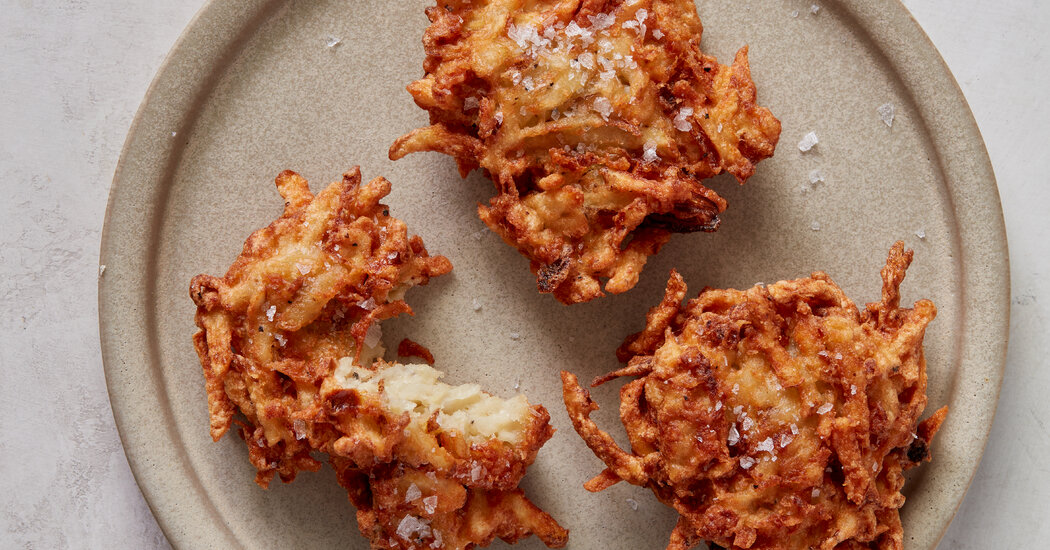
Every latke lover has an ideal. For some that perfect latke is chubby and soft-centered, with fine shreds of potatoes that melt in your mouth. For others it’s thin and golden, and shatters with an audible crunch.
You can make both with my latke recipe, it just depends on how you shape and fry them. Saucer-size pucks fried gently in oil will give you thicker, softer pancakes, best smothered in applesauce and eaten with a fork. Or form them small and fry them hot and fast, pressing down with a spatula to spread out the potato shreds and bring more of them into contact with the sizzling oil. I like to eat these thin ones out of hand like supersize potato chips, topped with sour cream and gleaming beads of salmon roe.
Featured Recipe
Classic Potato Latkes
There are more lovely things to fry for Hanukkah, of course. For her sugared doughnuts, Yewande Komolafe uses brioche dough spiked with buttermilk to add tang beneath the sandy, sugary coating. Yewande assures us we can make the dough ahead and in stages, but these marvelous treats are best served still warm from frying.
Hanukkah lasts eight nights, but your tolerance for the fuss and smell of frying might not. How about simmering up a nice pot of stew? Kay Chun’s squash and chickpea stew with lemongrass has a secret to its deep, aromatic flavor: a spoonful of peanut butter stirred into the sauce, which adds body and some deep, nutty notes. Or go with Hetty Lui McKinnon’s kung pao cauliflower, a vegan take on the iconic Chinese American dish. Ready in under half an hour, it has a rich, caramel character from the dark soy sauce and black vinegar that coat the florets.
But it’s not Hanukkah yet, so what’s for dinner tonight? I’ve had my eye on Eric Kim’s roasted chicken with fish-sauce butter. He roasts chicken thighs in a very hot oven to sear the skin and render the schmaltz, which then is tossed with stale bread cubes to make the best croutons ever. A quick pan sauce of butter, brown sugar and fish sauce adds sweetness and a pleasing umami funk. And then there’s Kay Chun’s perfectly classic pasta amatriciana, which has nuggets of guanciale (or pancetta) mingling with tomatoes and chiles.
For dessert, or as a breakfast treat for the weekend, Yewande’s maritozzi are soft, cream-filled buns, similar to those popular in Rome. Hers add a smear of jam in the middle for a pop of fruity sweetness.
As always, you do need to subscribe to get these recipes and the other thousands upon thousands we have at New York Times Cooking. If you need any technical assistance, send an email to cookingcare@nytimes.com; the smart folks there can help. And if you’d like to say hi, I’m at hellomelissa@nytimes.com.
Latkes Revival
Reheated latkes are never going to crunch as audibly or taste as magical as they do fresh out of the pan, but there are a few tricks you can use to bring them back to life. (Latkes keep for about four days in the fridge.)
Turn on your broiler or heat your oven as high as it goes. Lightly oil a baking sheet and spread the latkes out, leaving a little space in between them. Brush a little more oil lightly on top (you don’t need much). Broil or bake until you see the oil sizzling at the edges. If you didn’t salt the latkes when you first fried them, sprinkle lightly with salt now and serve at once. Making latkes last a few extra nights may not be a miracle, but it tastes pretty close.



